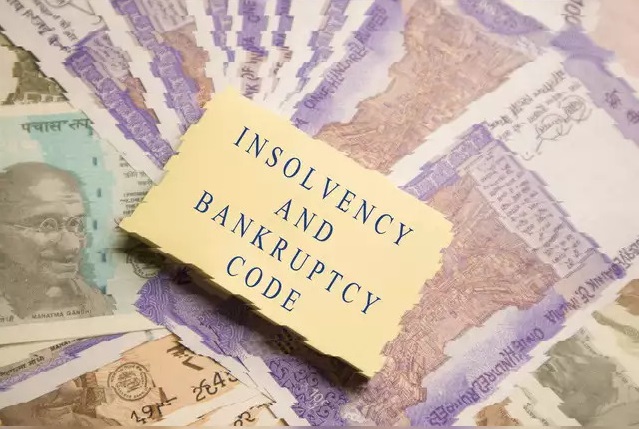Playing Dirty: Analysing ‘Astroturfing’ and its Defiance of the Antitrust Laws
[By Tejaswini Kaushal] The author is a student at Dr. Ram Manohar Lohiya National Law University, Lucknow. Introduction Scott Stratten, the author and founder of UnMarketing, whistle-blowed Bell Canada’s ‘MyBell Mobile’ App’s dirty little secret back in 2014, initiating one of the most intense discussions on the ethical and antitrust aspects of posting fake reviews, also called ‘Astroturfing.’ Flaunting a suspicious five-star review on the Apple AppStore, these reviews appeared to be written by Bell employees themselves. The reviews praised the App as “awesome” and “excellent,” which sharply contrasted with the one and two-star reviews from other users who labeled the App as “shameful.” While the company thoroughly maintained that this incident was an innocent repercussion of their employees’ overenthusiastic effort to promote the App, it does not undo the harm it must have caused to the principles of market competition. Astroturfing is, unfortunately, more common than consumers might realize. Studies in 2023 estimate that up to 45 percent of all online reviews are falsified. Some companies even offer to create positive fake brand reviews in exchange for a fee. Both consumers and competitors are adversely affected by this deceptive practice since online research and social media now heavily influence purchasing decisions, with people more likely to buy a product if they perceive other consumers’ experiences to be genuinely positive. In a 2023 survey, 93% of users have reported being impacted by online reviews for their buying decisions. With the increasing digitization and the new-age boom of Artificial Intelligence, the prevalence of astroturfing is going nowhere soon, which compels a thorough analysis of its nature and implication on the Indian market. This article analyzes the development and expansion of astroturfing, the universal proliferation of this phenomenon, and the subsequent response by various legislative frameworks, with a particular focus on Canada. Lastly, it will examine the antitrust outlook in light of existing Indian legal jurisprudence and executive actions on astroturfing to address legislative gaps. Astroturfing Defined: a Digital Web of Deception Merriam-Webster defines astroturfing in its original sense: “organized activity that is intended to create a false impression of a widespread, spontaneously arising, grassroots movement in support of or in opposition to something (such as a political policy) but that is in reality initiated and controlled by a concealed group or organization (such as a corporation).” Coined by a United States (US) Senator in 1985, astroturfing involves projecting a fabricated image of naturalness to sway public opinion and achieve virality. Originally practiced in the physical world, astroturfing has now found new life online with the help of digital media and new technologies. The cyber equivalent of astroturfing is popularly enjoying the portmanteau ‘cyberturfing.’ It often employs tactics like fake testimonials, paid social media accounts, and the creation of multiple fake personas to appear genuine. It involves various methods, such as company-employed bloggers posting biased product reviews disguised as unbiased ‘customer opinions,’ creating multiple fake personas (“sockpuppets”) on platforms like Reddit to spread a populist idea for a product, using paid social media accounts to promote specific product brands and engaging in pay-for-play deals with independent bloggers for positive coverage in exchange for incentives. Astroturfing’s emergence has brought concepts like 50 Cent parties, online water armies, and crowdturfing to the forefront. The rise of social media, especially Twitter, has facilitated the proliferation of astroturfing, allowing fake profiles and bots to wield significant influence on forums, social networks, and customer platforms to favor a certain brand or propel a certain product. Its use to alter customer reviews adversely impacts the domestic and international commercial markets. The Expanding Reach of Astroturfing: A Threat to Trust and Competition Astroturfing has become a powerful and efficient strategy for many organizations, thanks to the broader arena provided by the internet. However, this practice significantly impacts consumers’ behavior and organizations’ reputations, undermining authentic opinions and promoting unfair trade practices. On the one hand, organizations risk tarnishing their image and authenticity if caught astroturfing, as seen with instances involving Microsoft and Wal-Mart in the US. Microsoft once planned an astroturfing campaign and enlisted the services of a prominent Public Relations firm to execute it. However, the campaign faced a major setback when confidential documents related to the scheme were leaked to a leading Los Angeles newspaper before it commenced. Similarly, Wal-Mart and their PR firm adopted a similar strategy by creating a blog called ‘Working Families for Wal-Mart’ to counter the negative publicity the company had received on the internet. These cases highlight organizations’ risks and consequences when resorting to deceptive online marketing tactics to shape public opinion. On the other hand, organizations can fall victim to astroturfing when competitors spread false information about them. Astroturfing campaigns often involve spreading defamatory and false content, like fake online reviews. One notable instance is Samsung facing a $350,000 fine in Taiwan for publishing false comments and reviews to promote its products and disparage competitors. Similarly, McDonald’s was penalized in Japan for recruiting 1,000 part-time employees to queue up early, generating buzz for its Quarter Pounder burger launch. It claimed it was for “customer feedback” and “market research.” Recently, proactiveness has been witnessed from online marketplaces, consumer-hosting platforms, and intermediaries. Major companies like Amazon and Google have been actively combating fake reviews and fraudulent practices in court. Amazon proactively blocked over 200,000,000 suspected fake reviews in 2022. As of May 2023, Amazon has taken legal action against 94 fraudsters in the US, China, and Europe, aiming to combat the issue of fake reviews. In June 2023, Amazon filed four new lawsuits against fraudsters attempting to mislead customers and harm selling partners by facilitating fake reviews. The lawsuit entities, namely, Nice Discount, Littlesmm, MangoCity, and Reddit Marketing Pro, were accused of selling and promoting fake reviews to manipulate product listings on Amazon. Such fraudulent activities are primarily driven by an emerging ‘fake review broker’ industry, where brokers approach customers through websites, social media, and encrypted messaging to solicit fake reviews in exchange for money or incentives. Similarly, Google filed a lawsuit
Playing Dirty: Analysing ‘Astroturfing’ and its Defiance of the Antitrust Laws Read More »









